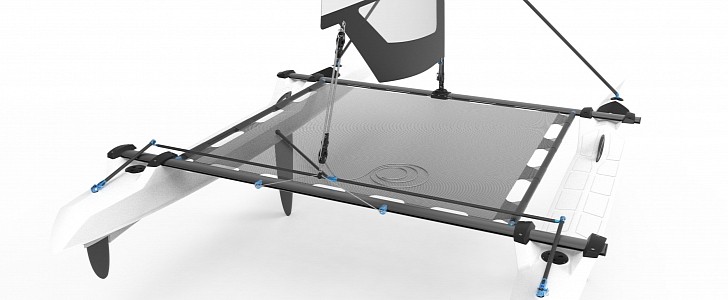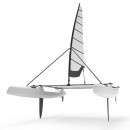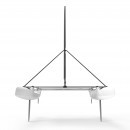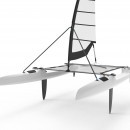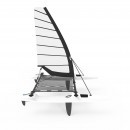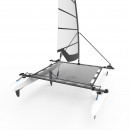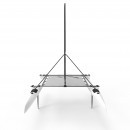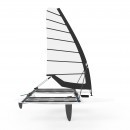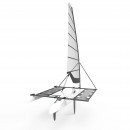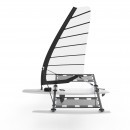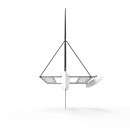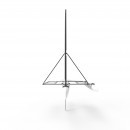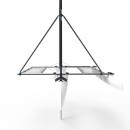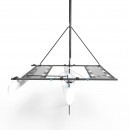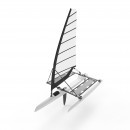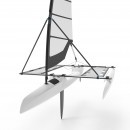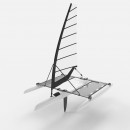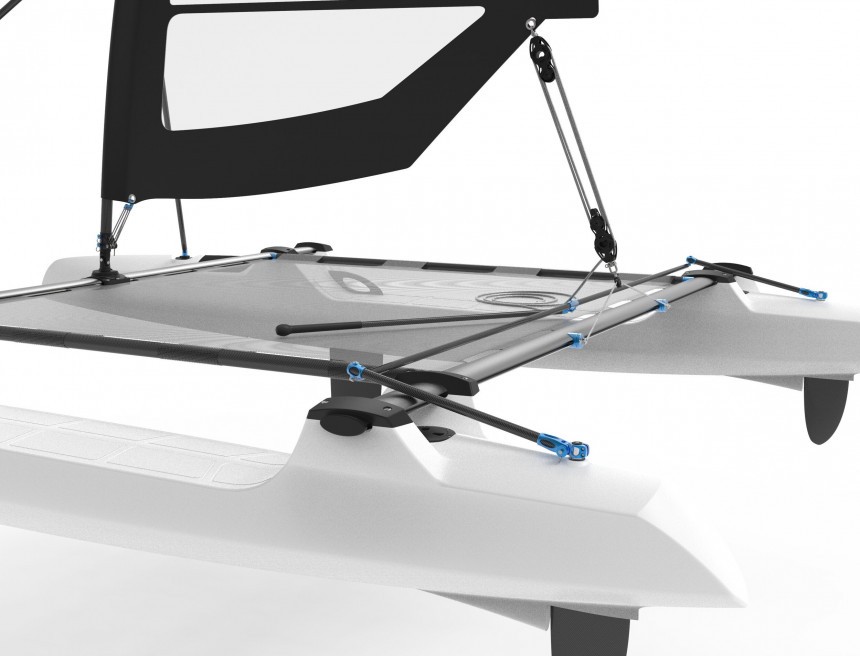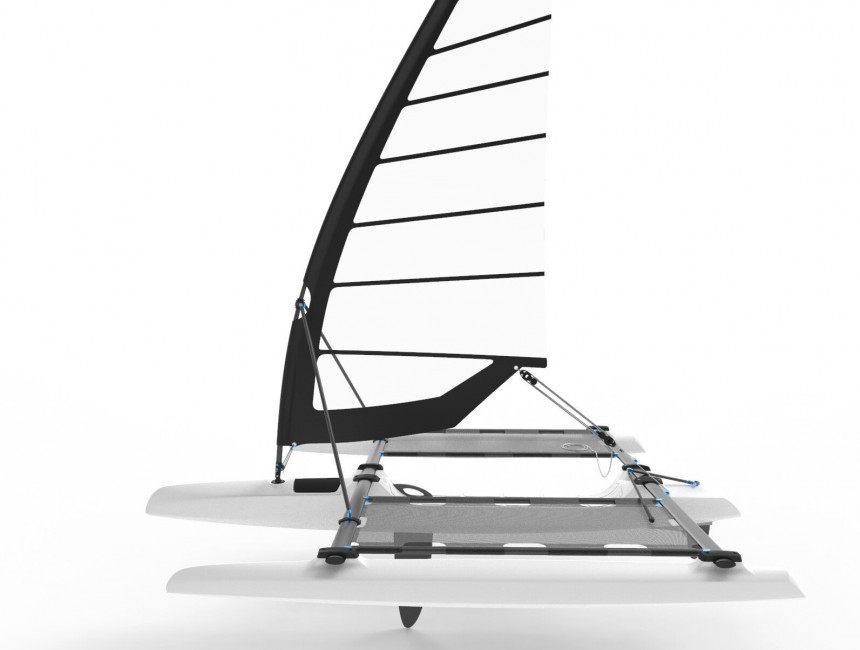The rate at which technology is advancing, industry after industry is seeing incredible advancements and innovations. One industry, sailing, is seeing advancements at an alarming rate. One design team, Pixel and Timber is getting ready to take wind sailing and make it a whole lot easier for the user, in the process, cleaning the world’s oceans.
What you're seeing isn’t yet a real toy you can go out and buy, but it is a design so simple and so effective that the next year or so may actually bring this beauty to life. Simply known as Modular Multi-Hull Sailboat, it’s the work of Pixel & Timber founder David Parrott, an industrial designer that strives to create conceptual products that become reality. Over the years, this team have designed an array of products ranging from medical equipment to tattoo accessories and tennis slings.
The Sailboat, on the other hand, comes from another very researched industry by this team, watersports and sailing. Here, Parrott aims to create a vessel that is modular, meaning it can fulfill several sailing styles, but more importantly, this vessel is one that helps clean up the world’s oceans. How? Simple. The hulls that the Sailboat will have at its disposal are created from reclaimed High-Density Polyethylene (HDPE), or, in layman terms, plastic, but the harder one.
The designer’s website does state that this design is a continuation of previous research based around small sailing craft and is meant to be a vehicle that offers the average human a joy usually bestowed upon the elite of society; it’s going to be cheap to own.
As it stands, the main hull comes in at 18 ft (5.5 m) long and isn’t just a regular old hull. Because the Sailboat is meant more for inland lake and coastal use, you’ll find a textured deck to increase grip while standing or traveling on the rig, and secondly, there’s a cooler and storage integrated into the structure. A quick release mast base also offers ease-of-use for fast packing and unpacking.
Speaking of packing and unpacking, one feature that the vessel boasts is an assemble-on-site design. With this last feature, manufacturers can cut assembling and shipping costs, while the eventual owner gets to customize their boat to their liking. Win-win if you ask me.
Three different layouts will be possible with this design. The first option we may find is the tacking outrigger, suitable for use by just one person as disassembly is not required in order to haul or launch the variation. Here, only a main hull and a side float is needed.
The second variation is that of a trimaran. For this variation, you will find a main hull and two floats on each side. This should be the most stable variation for riders to experience. Between the floats and hull, small trampolines allow riders to utilize a paddle in case wind is taking a break.
Finally, a catamaran design can be achieved. For this variation, users require two main hulls and extra hardware to secure the sail between the two. One feature I like about this variation is the massive net stretched between the two hulls. Imagine taking a day out on the lake with your spouse and just soaking up the sun at some point. The extra hull also means an extra cooler, so enjoy the trip. The use of two keels should also offer even greater stability but may require you to work those muscles to steer.
If this design ever takes off, it should reduce HDPE presence in our oceans by 60 lbs (27 kg) per hull. Better start buying these babies if you want to help clean the world.
The Sailboat, on the other hand, comes from another very researched industry by this team, watersports and sailing. Here, Parrott aims to create a vessel that is modular, meaning it can fulfill several sailing styles, but more importantly, this vessel is one that helps clean up the world’s oceans. How? Simple. The hulls that the Sailboat will have at its disposal are created from reclaimed High-Density Polyethylene (HDPE), or, in layman terms, plastic, but the harder one.
The designer’s website does state that this design is a continuation of previous research based around small sailing craft and is meant to be a vehicle that offers the average human a joy usually bestowed upon the elite of society; it’s going to be cheap to own.
Speaking of packing and unpacking, one feature that the vessel boasts is an assemble-on-site design. With this last feature, manufacturers can cut assembling and shipping costs, while the eventual owner gets to customize their boat to their liking. Win-win if you ask me.
Three different layouts will be possible with this design. The first option we may find is the tacking outrigger, suitable for use by just one person as disassembly is not required in order to haul or launch the variation. Here, only a main hull and a side float is needed.
Finally, a catamaran design can be achieved. For this variation, users require two main hulls and extra hardware to secure the sail between the two. One feature I like about this variation is the massive net stretched between the two hulls. Imagine taking a day out on the lake with your spouse and just soaking up the sun at some point. The extra hull also means an extra cooler, so enjoy the trip. The use of two keels should also offer even greater stability but may require you to work those muscles to steer.
If this design ever takes off, it should reduce HDPE presence in our oceans by 60 lbs (27 kg) per hull. Better start buying these babies if you want to help clean the world.
